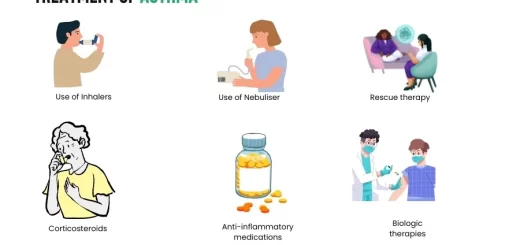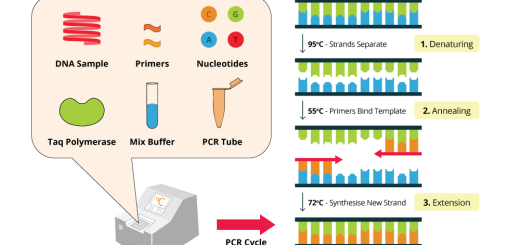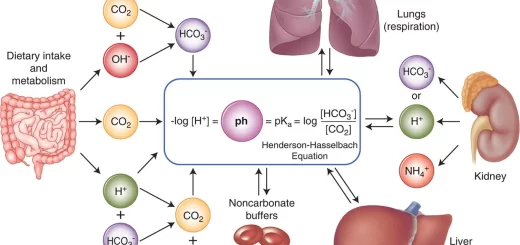Calcium metabolism, Calcitonin function, Vitamin D3 and Biosynthesis of calcitriol
Calcium metabolism is the regulation of calcium ions (Ca2+) in (via the gut) & out (via the gut and kidneys) of the body, and between body compartments: the blood plasma, the extracellular and intracellular fluids, and bone, calcium plays an important role in a wide range of biological functions, either in the form of its free ion or bound complexes, One of the most important functions of bound calcium is in skeletal mineralization.
Calcitonin (thyrocalcitonin)
Calcitonin is a peptide hormone of 32 amino acids, It is secreted from the parafollicular C cells of the human thyroid (less commonly the parathyroid and thymus), and it is a calcium-lowering hormone.
Functions of calcitonin
Calcitonin reduces plasma calcium concentration in three separate ways:
- The primary target of calcitonin is bone. It reduces bone resorption by inhibiting osteoclasts function. This results in a decrease in the concentration of both calcium and phosphate in serum. (a metabolic effect opposite to those of parathyroid hormone).
- In the kidney calcitonin. In contrast to parathyroid hormone, increases the excretion of calcium, phosphate, sodium, potassium, and magnesium and inhibits the synthesis of 1,25-dihydroxycholecalciferol.
- The third and most prolonged effect of calcitonin is to decrease the formation of new osteoclasts. Calcitonin has only a very weak effect on plasma calcium concentration in adult human beings. On the other hand, the effect in children is much mon marked because bone remodeling occurs rapidly in children, with absorption and deposition of calcium.
There are two major differences between the calcitonin and the parathyroid feedback system.
- The calcitonin mechanism operates more rapidly.
- The calcitonin mechanism acts mainly as a short-term regulator of calcium ion concentration because it is very rapidly overridden by the much more powerful parathyroid control mechanism.
Control of calcitonin secretion
- An increase in plasma calcium concentration of about 10% causes an immediate three-to six-fold increase in the rate of secretion of calcitonin.
- Dopamine and estrogens stimulate calcitonin secretion.
- Gastrin, CCK, glucagon, and secretin stimulate calcitonin secretion.
Vitamin D3 (Calcitriol) [(1, 25 (OH)2 – D3]
There are 6 types of vitamin D, the commonest of which is vitamin D3 (cholecalciferol). It is formed in the skin from 7-dehydrocholesterol by the action of ultra-violet rays from the sunlight, it is also obtained from dietary sources as fish liver oils, egg yolk, and animal fat (e.g. butter and milk).
Biosynthesis of calcitriol
Calcitriol is considered as a hormone: Most vitamin D occurs under the skin by ultraviolet irradiation of 7-dehydrocholesterol (non-enzymatic reaction). A small amount is taken in food.
A specific transport protein called the D-binding protein binds vitamin D3 from the skin and intestine to the liver where it undergoes 25-hydroxylation, the first obligatory reaction in the production of calcitriol.
The 250 H-D3 enters the circulation and is transported to the kidney the D binding protein. In the Mitochondria of the renal proximal tubule 25 0H- D3 is hydroxylated at C1 to give 1.25 (OH)2-D3 which is the most potent metabolite of vitamin D.
Actions of 1,25 DHCC (calcitriol)
Vitamin D acts as a regulator of the metabolism of calcium and phosphorus, by promoting the transport of calcium and probably secondarily phosphate into the bloodstream from the intestinal lumen, bones, and renal tubules (target organs).
1- It increases the absorption of both calcium and phosphate from the intestine. A nuclear receptor in the intestinal cell binds to calcitriol, stimulating gene transcription and the formation of specific mRNA. The specific mRNA codes for a calcium-binding protein (calbindin-D proteins).
The calcium-binding protein binds Ca2+ ions and increases intestinal Ca2+ absorption. These proteins act as carrier proteins for facilitated diffusion by which, the calcium ions are transported into these cells. The rate of calcium absorption is proportional to the quantity of calcium-tinding proteins. 1.25 DHCC also induces the formation of Ca2+– dependent ATPase in the intestinal cells, which is needed to pump Ca2+ into the interstitium (active transport mechanism).
2- It facilitates Ca2+ reabsorption in the distal nephron of the kidney.
3- On the bone.
- Normally: it helps bone mineralization through increased synthesis of osteocalcin) leading to the development of normal bone and teeth.
- Large doses of vitamin D causes bone resorption and mobilization of Ca2+ and PO4-into the blood. This occurs by increasing the number of osteoclasts.
Regulation (control) of 1,25DHCC synthesis
1- Effect of plasma calcium level
A negative feedback relation exists between the plasma Ca2+ level and the rate of synthesis of 1.25DHCC through PTH as follows:
- When the plasma Ca2+ level is low, the secretion of PTH increases, which stimulates lα-hydroxylase leading to increased synthesis of 1,25 DHCC.
- When the plasma Ca2+ level is high, little 1,25DHCC is synthesized due to decreased secretion of PTH. Lack of 1,25 DHCC, in turn, decreases the absorption of calcium from the intestine and renal tubules, thus causing calcium ion concentration to fall back toward a normal level.
2- Effect of plasma PO4 level
The synthesis of 1,25 DHCC is also stimulated by a low and inhibited by a high plasma PO4– level by a direct inhibitory effect of PO4– on the 1α-hydroxylase enzyme.
Calcium metabolism
Functions of Ca2+ in the body
- It enters the structure of bone, teeth, connective tissue elements, and cellular cement substances.
- The ionized calcium is necessary for blood coagulation, muscle contraction, and nerve function.
Sources, requirements, and absorption of calcium
In normal adult individuals, the daily calcium requirement is about 1 gm, and it is increased during childhood, pregnancy, and lactation. The chief sources of calcium are milk, cheese, eggs, and green vegetables. It is absorbed from the upper small intestine by an active process involving a Ca2+ dependent ATPase, and to a little extent, also by facilitated diffusion.
Calcium content and distribution in the body
The adult human body contains about 1100 gm of calcium, 99% of which is present in bones and teeth, while the remaining part is present in soft tissues and extracellular fluid.
A- Calcium in the plasma
The normal plasma Ca2+ level averages 10 mg %. It is present in the following forms:
- Non-diffusible through the capillary membrane: It is combined with plasma proteins (albumin and globulin). This form is about 45% of the plasma calcium and it is physiologically inert.
- Diffusible through the capillary membrane: This is about 55% of plasma calcium and it is of 2 types:
- Non-ionized (5%): Forming Ca2+ complexes with bicarbonate and citrate.
- lonized (50%): This is the active fraction of calcium (necessary for blood coagulation, muscle, and nerve function).
B- Calcium in bones
It is 2 types:
- 1- Stable salts (hydroxyapatites) that are very slowly exchangeable with the plasma calcium. More man 99% of calcium of bone is present in this form.
- Less than 1% is in the form of readily exchangeable mobilizable amorphous calcium phosphate known as exchangeable calcium. Exchangeable calcium forms a reservoir that is normally in equilibrium with plasma calcium.
Exchangeable calcium
The body contains a type of exchangeable calcium that is always in equilibrium with calcium ions in the extracellular fluid. It is present in:
- A small portion of exchangeable calcium is present in the mitochondria of many tissues, especially of the liver and intestine.
- Most exchangeable Ca” is present in the bone in the form of readily mobilizable salts such as amorphous calcium phosphates. This type of calcium provides a rapid buffering mechanism to keep the calcium ion concentration in ECF from rising to excessive levels or falling to very low levels.
Control of calcium homeostasis
- The first line of defense is the buffer function of the exchangeable calcium.
- The second line of defense is the hormonal control mechanism.
Parathormone increases plasma calcium levels. Calcitonin is a calcium-lowering hormone. 1,25 DHCC increases plasma Ca2+ level by increasing Ca2+ absorption from the intestine. All three hormones probably operate to maintain the constancy of the calcium level in the body fluids. Glucocorticoids, growth hormone, thyroid hormones, estrogen, and testosterone can also affect calcium metabolism
Parathyroid gland anatomy, structure, function, hormones and Tetany types
Regulation of Thyroid hormone secretion, Effects of Hyperthyroidism and Hypothyroidism
Histological structure of thyroid gland & Functions of Thyroid Hormones (T3 & T4)
Thyroid gland function, hormones, function, anatomy and Congenital anomalies
Endocrine system structure, function, disorders, Endocrine Glands and Hormones types
Suprarenal glands (adrenal glands) anatomy, structure and Effect of Deficiency of Catecholamines



